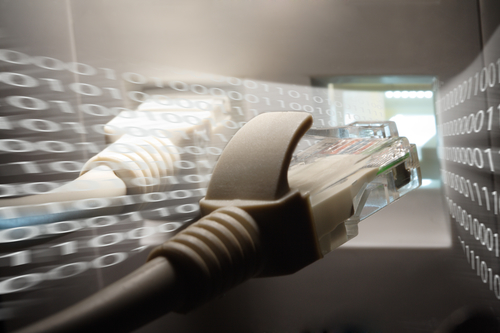There’s no arguing the convenience of wireless. When you want to scroll through Facebook on your iPad while watching TV, you need wireless. And you probably don’t want your laptop tethered to the office desk at all times.
However, network wiring delivers faster speeds and better security to connected devices. From entertainment systems to smart home security features, you get better performance from wired Internet.
Network wiring benefits include:
- Fastest speeds — achieve the speeds promised by your provider
- Best security — neighbors and hackers can get into wireless networks more easily
- More reliable — speed and performance are more consistent
- Locations — rooms with poor WiFi reception can be wired for high speed
- Longevity — Ethernet cable can be future-proofed for up to 10 GB speeds
- Flexibility — more wired locations makes it possible to have better WiFi throughout the home
Mapping Your Home Network Wiring
Before you cut into any walls or hire an electrician to install network wiring, make a plan by mapping out the home network you need. Think about today’s needs and future changes. Which rooms need wiring? Which rooms might need wiring later, if the purpose of the room changes?
You don’t need to create a detailed electrical schematic. Sketch a rough draft, then walk around the house to get an idea of where wiring will need to travel.
Your basic plan should include the central distribution setup, the locations for wiring, and notes about possible obstacles. Your electrician will then help put this plan into action.
Wiring is fairly easy if you have accessible attic or basement space. In most cases, network wiring does require running cables through a wall or ceiling. Opening up walls to install jacks also requires some manual labor.
For intrepid DIYers, this can all be done over the course of a few weekends. Hiring an electrician to install your network wiring will save you a lot of trouble and dangers, though, and get the job done faster and smoother.
What Kind of Cable and Equipment Do I Need?
At a minimum, you need Cat-5e cable for home network wiring. At 100 MHz bandwidth and speeds up to 1 GB, this has been the standard for years and will continue to offer excellent performance for years to come.
Cat-6 cable providers larger bandwidth, faster speeds, and reduced crosstalk (less “interference” reducing performance). Cat-6 costs a little more but the installation is the same. Internet providers don’t even offer speeds up to 10 GB, so Cat-6 is not necessary. But for network wiring that may last many decades, Cat-6 makes sense as a long-term investment.
Other equipment to decide on: modem and routers, jacks with various numbers of ports and types, wall plates and other hardware depending on your setup and networking needs.
Planning for the Future with Home Network Wiring
You already love your streaming device, DVD player, home office setup, and maybe a few other connected devices throughout the home. Moving forward, expect to see more connectivity in every room of the home as a variety of devices join the “Internet of Things.” Soon you will want to wire your refrigerator, thermostat, air conditioning, and many other appliances.
More network wiring keeps your options open. And when you bring in an electrician to install the wiring, it’s cost effective to be thorough.
For help planning your network wiring to get top performance for decades to come, contact us to find out about expert wiring installation services.


